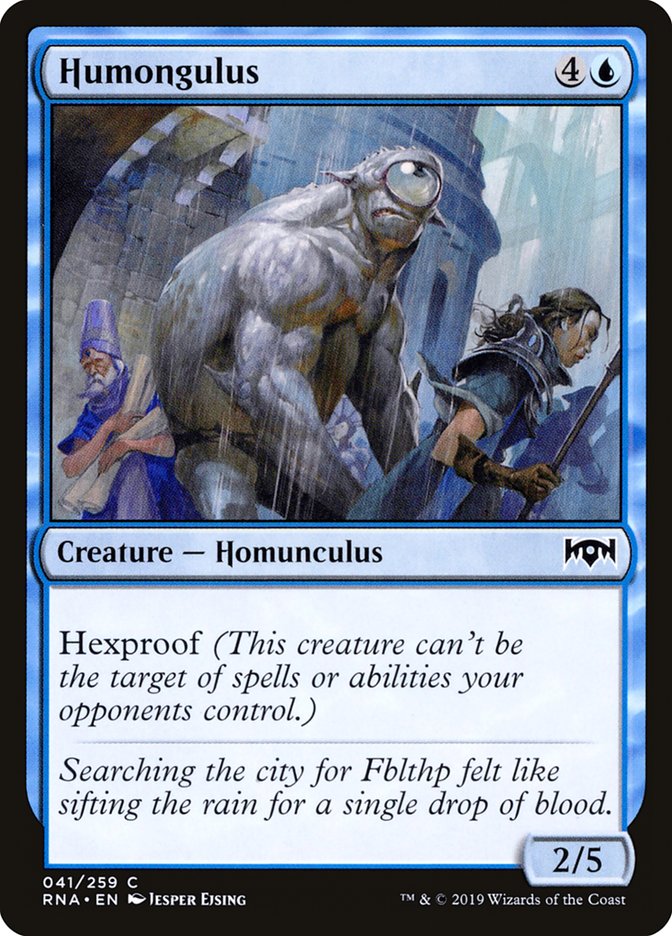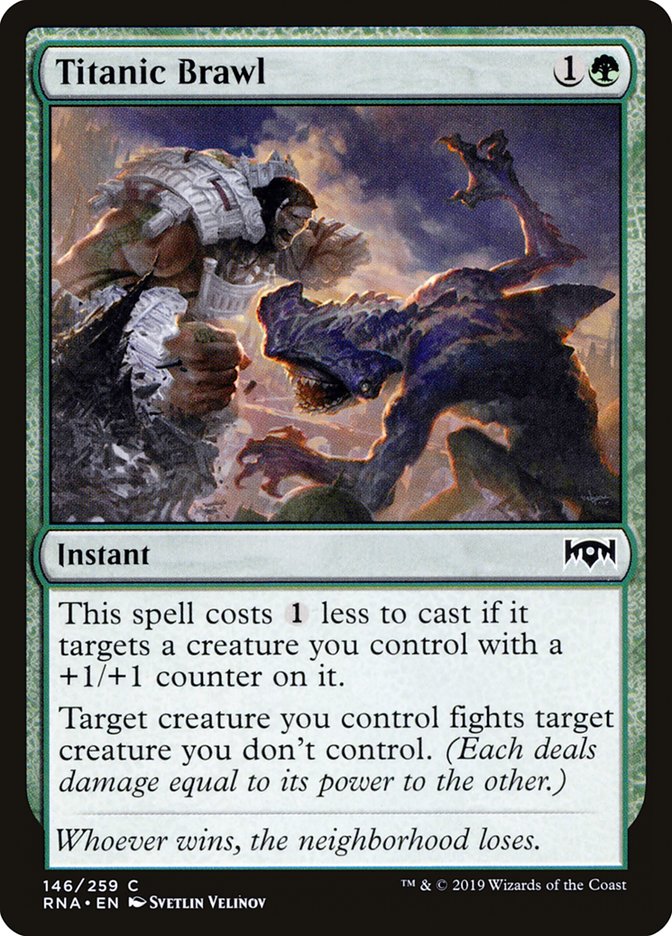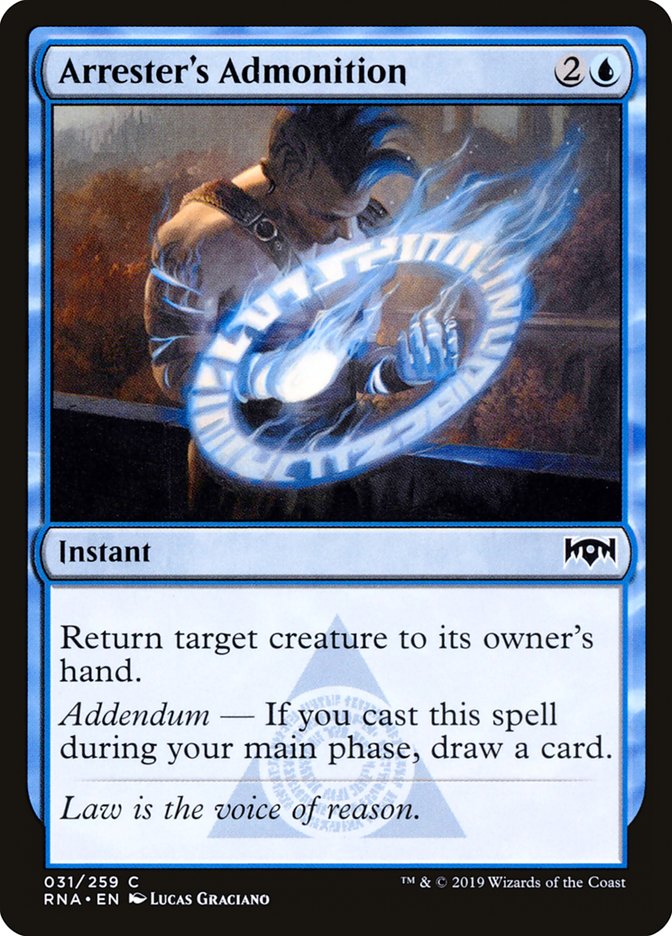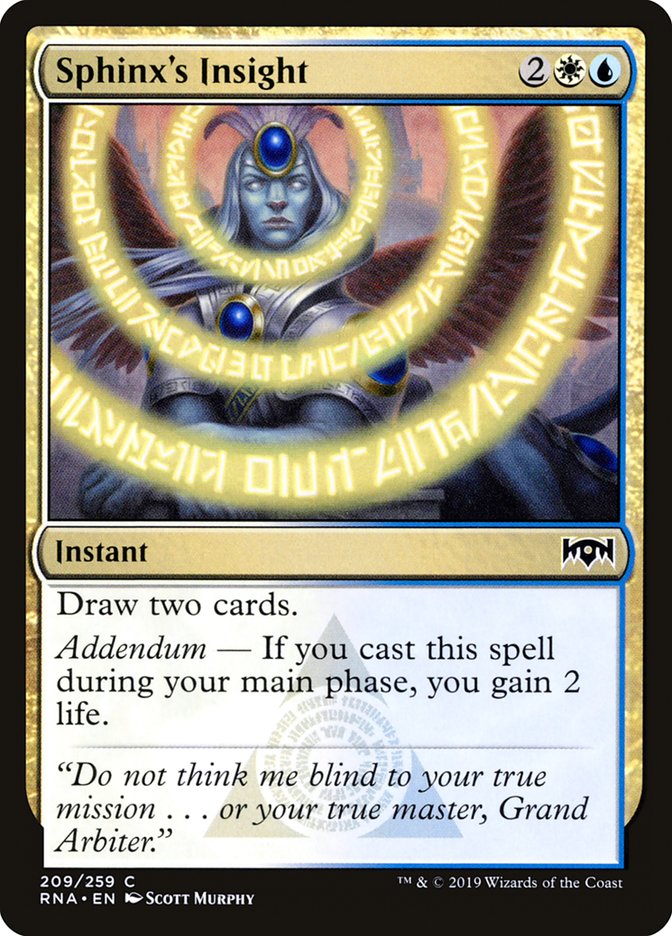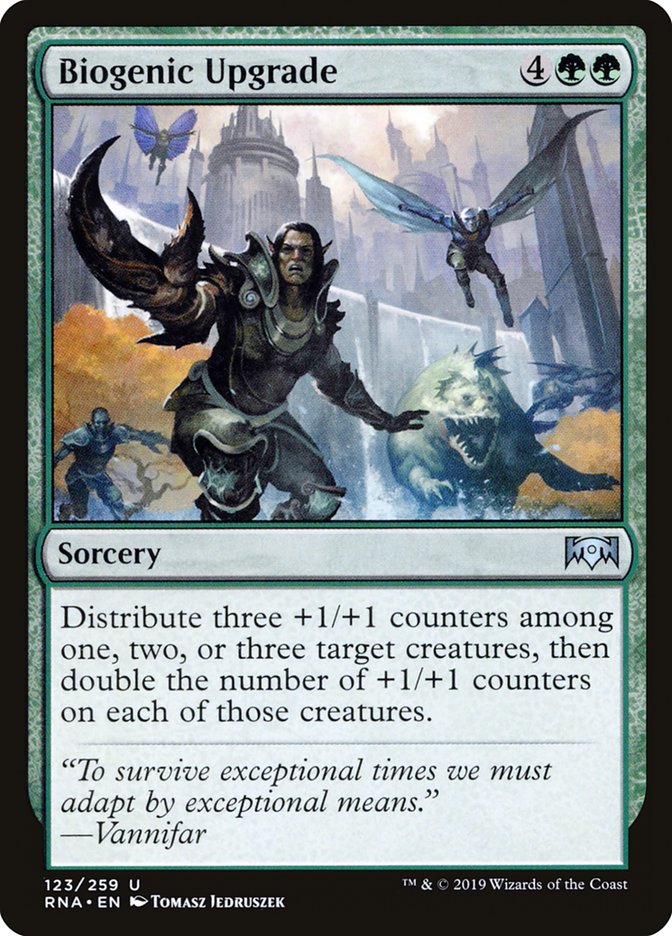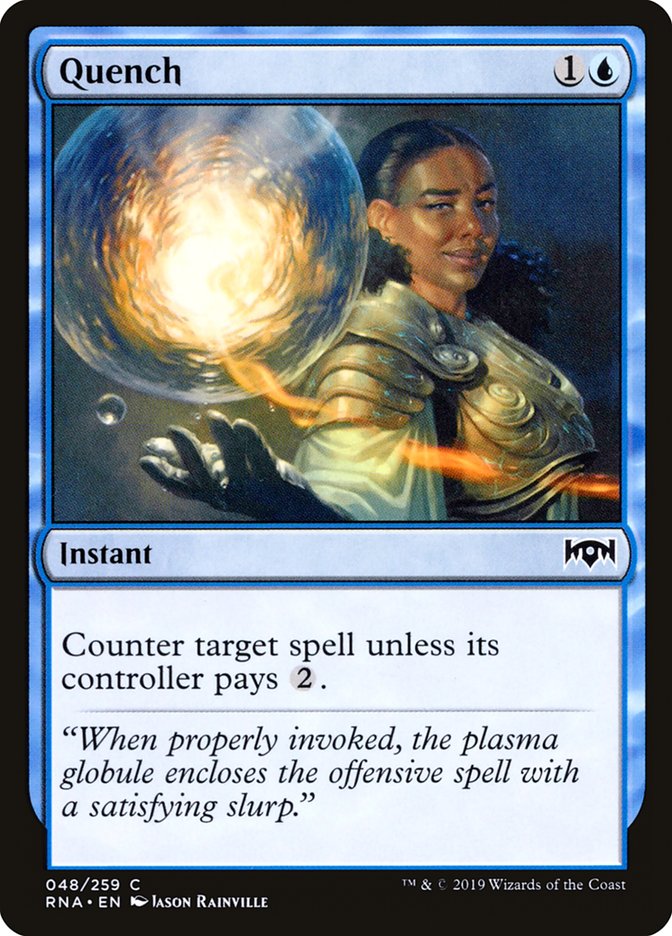As of writing this, about half of the cards from Ravnica Allegiance have been previewed. I
mentioned on Tuesday
how this can make it difficult to evaluate cards, since the context of the
set is important. However, there are some cards that tend to define this
context. There are similar variants of cards that are in every set. Each
set has a cheap black common removal spell and expensive black common
removal spell (e.g. Dead Weight and Deadly Visit). Green always has a fight
spell. White always has some Pacifism variant, usually Luminous Bonds. By
next week there will be enough cards to really talk about the archetypes
and environment, but today there’s enough to break down and evaluate some
classic Limited cards in this set as well as cycles that can tell us a bit
more about the format.
The hexproof common. In Dominaria we had Cold-Water Snapper, which
played a very important role as a win condition and blocker. It seems as
though in this set, the win-condition aspect wasn’t necessary. If all you
really need is a roadblock, you may very well appreciate one less mana more
so than the extra two power from Cold-Water Snapper.
The developers and designers of Magic tend to be careful when it comes to
hexproof. I imagine that the mana cost and size of the body were very
specifically chosen. My gut says this is a hint to five as the toughness
threshold of the set.
The common fight spell. In general, these spells have been good when they
gave a power/toughness boost, and lackluster otherwise. Pounce was never
great. Prey Upon is playable, but nothing special. Overall, I’d guess that
if you’re not getting the discount from Titanic Brawl, it’s not going to be
great. But since both green mechanics create +1/+1 counters, this may not
be too difficult.
The blue bounce spell. This card can range from very good to quite bad, but
I think Arrester’s Admonition is likely to be on the good side. Drag Under
was great last time we saw it, and Crashing Tide was a playable without the
Merfolk interaction. The Ravnica Allegiance bounce spell is Drag
Under if that’s what you want but can also double back as instant speed
interaction for combat blowouts or to just play it safe when you’re ahead.
I imagine the vast majority of the time you’ll cast this spell at sorcery
speed, but the flexibility is a nice addition.
Every format has at least one Divination at common and some have multiple. Dominaria had both Divination and Dark Bargain, so there could
certainly be more to accompany Sphinx’s Insight (I think it’s unlikely we
see more in the same category of the previous cards in this article).
Sometimes formats are too fast to just do nothing but draw cards, but other
formats are all about card advantage. Sphinx’s Insight’s role will entirely
depend on whether or not Gruul and Rakdos punish taking time off to draw
cards. The two-life boost or instant speed helps here, but I’m not sure
it’s enough. I think this card needed to either cost three mana or gain
three life for it to get there. Hopefully it’s still good enough, but I’m
skeptical.
Green almost always gets some card similar to Overrun. Overrun is such a
beating in Limited, and recently these effects have lost the trample but
changed the boost to +1/+1 counters. Biogenic Upgrade places a minimum of
six counters, but it can be more thanks to mechanics like adapt and riot.
My gut says that six mana is just too much for this, but in the right deck
it might be good enough.
There are usually one or two common counterspells, and Quench is a good
one. It’s pretty rare in Limited to have a counterspell that counts as a
two-drop. The fact that this can always trade on curve is nice, but it
doesn’t scale well at all. I imagine it will be quite good and its
existence will place a tax on the format where it will often be correct to
play with the card in mind.
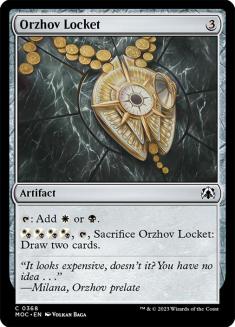
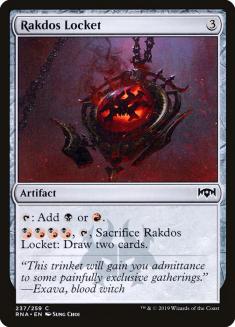
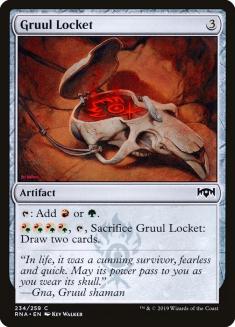
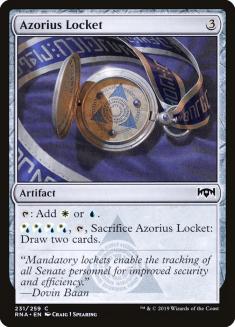
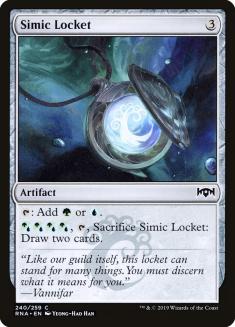

The lockets in the last format were all quite bad. They were playable in
Sealed, but it was rare that I wanted to include one in my Draft deck.
Occasionally you needed access to more card advantage in Dimir, or the
five-color Gate deck, but it wasn’t often. However, I expect both Simic
Locket and Azorius Locket to have more play to them than those in the
previous format. The reason for this is that both mechanics play well with
Lockets.
Addendum suggests that Azorius decks will have many instants, so if you’re
incentivized to hold up mana frequently, the activated ability on the
Locket can help hide information and is easier to activate on your
gameplan. Adapt suggests that Simic will want access to lots of mana, so
ramping with a Locket will have more of a home. Furthermore, adapt is
something to do at instant speed, making it easier to activate a Locket
without putting your guard down. The other Lockets, however, I don’t expect
to see much play.


